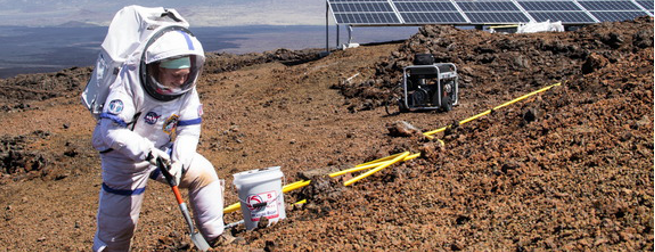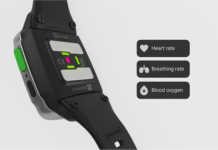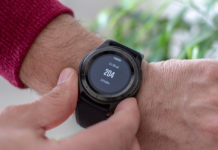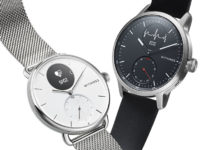Jocelyn Dunn recently served as Chief Scientist during an 8-month simulated Mars mission. WT | Wearable Technologies is excited to have her featured as a keynote at our WT | Wearable Technologies Conference in Canada – coming up on September 10 in Toronto! In the following post is an interview with her about the space project and wearables. This sneak peak gives you even more reason to attend the conference in Canada next week!
Is it common to fake a space mission on earth? And how and where would you do that?
Simulated missions are a necessity in preparing for future human space exploration endeavors. It is safer and cost effective to prepare on the ground in terrestrial environments that are in some ways analogous to the Moon and Mars. Space technologies and operations are tested in desert and volcanic terrains on Earth.
NASA conducts field tests called Research and Technology Studies (RATS) in desert terrain of Arizona, California, and Washington, and In-situ Resource Utilization Demonstrations (ISRU) are conducted on volcanic terrain in Hawaii. These examples are for the development of technologies to assist astronauts in planetary exploration and to harvest resources from the Moon or Mars to provide propellant, life support, or materials for habitat structures.
Studies of the human element of space exploration are conducted at several sites. These simulated missions immerse human explorers in isolated, confined, extreme (ICE) environments, such as NASA’s Extreme Environment Mission Operations (NEEMO) about 60 feet under the ocean in the Florida Keys, Human Exploration Research Analog (HERA) at NASA Johnson Space Center, Mars Desert Research Station in Utah, Flashline Mars Arctic Research Station (FMARS), and Hawaii Space Exploration Analog and Simulation (HI-SEAS) on the slopes of Mauna Loa volcano
What wearables have been used during the fake Mars mission?
At HI-SEAS, during the 8-month simulated Mars mission, crew members wore Jawbone UP wristbands 24-7 and utilized Hexoskin biometric shirts to measure workout performance. The crew also donned MX-C mock spacesuits during extravehicular activities (EVAs)
Do you know if wearables are used in real space missions and if so which ones?
Well, let’s talk about real spacesuits, which are an example of extremely expensive wearables. Astronauts have suits for takeoff / re-entry and for EVAs, also known as spacewalks. The spacesuit for EVAs is called the Extravehicular Mobility Unit (EMU), and it has been reported that spare EMU suits cost about 2 million USD.
The EMU suit contains the Primary Life Support System (PLSS) and is worn along with the Simplified Aid For EVA Rescue (SAFER) which is a propulsive backpack system or jetpack for emergency situations. The suits have a liquid cooling garment to keep astronauts from overheating, another garment layer to retain pressure in the suit, and also the thermal micrometeoroid garment to reflect the sun’s heat away and to prevent damage from flying debris. The helmet has pressured oxygen for the astronauts to breathe for up to 7 hours of EVA and also has a visor assembly providing cameras, spotlights, a gold-tinted sun visor to protect vision. The chest-mounted display and control module has labels written in reverse, so that astronauts can use a wrist-mounted mirror to read the display.
A custom version of the Phillips Actiwatch is the primary actigraphy for International Space Station (ISS) missions monitoring activity levels, sleep patterns, and light exposure to study the impact of spaceflight on circadian rhythms. In addition, International Space Station (ISS) missions have flown many research and development wearables for actigraphy, environmental monitoring (radiation dosimeters and CO2 sensors), physiological monitoring (cardiac and respiratory, body temperature, skin conductance), and sensory augmentation.
Space agencies have also encouraged global participation from students and companies to design wearables that could assist astronauts, such as providing tactile feedback to the inside EVA gloves, designing wearable displays to show information about the environment and resource levels, or creating a virtual reality setup to help astronauts feel more at home.
Why is measuring an astronauts stress levels important on a space mission?
If we can automatically detect the stress states of astronauts, then we can develop countermeasures to improve crew performance and reduce mission risks. Published results from the longest Mars analog mission globally, Mars 500 (520-day) simulation in Russia, showed that 85% of reported conflicts involved crewmembers experiencing high levels of stress and exhaustion. This research is toward monitoring and managing the stress and exhaustion of astronauts to improve mission performance. In general though, developing these stress management technologies is helpful for everyday citizens as well. Stress is a common problem in our modern society and has been linked to chronic diseases such as atherosclerosis.
What is your favorite wearable at the moment? Do you wear technology?
One of my favorite wearables at the moment is the Lumo Lift posture coach. I’m probably an inch taller these days! Another big favorite is Jawbone, as I really enjoy the user interface design of their mobile applications. I have been using Jawbone UP wristbands for a few years to track my sleep and activity levels. I recently converted to the latest Jawbone UP4, but I’m still wearing my old UP “wristband” on my ankle sometimes when I’m biking for example. My favorite wearable for monitoring workout performance is Hexoskin biometric shirts which enable highly accurate heart rate and breathing data that wristbands cannot provide. I can’t get enough wearable device data!

















